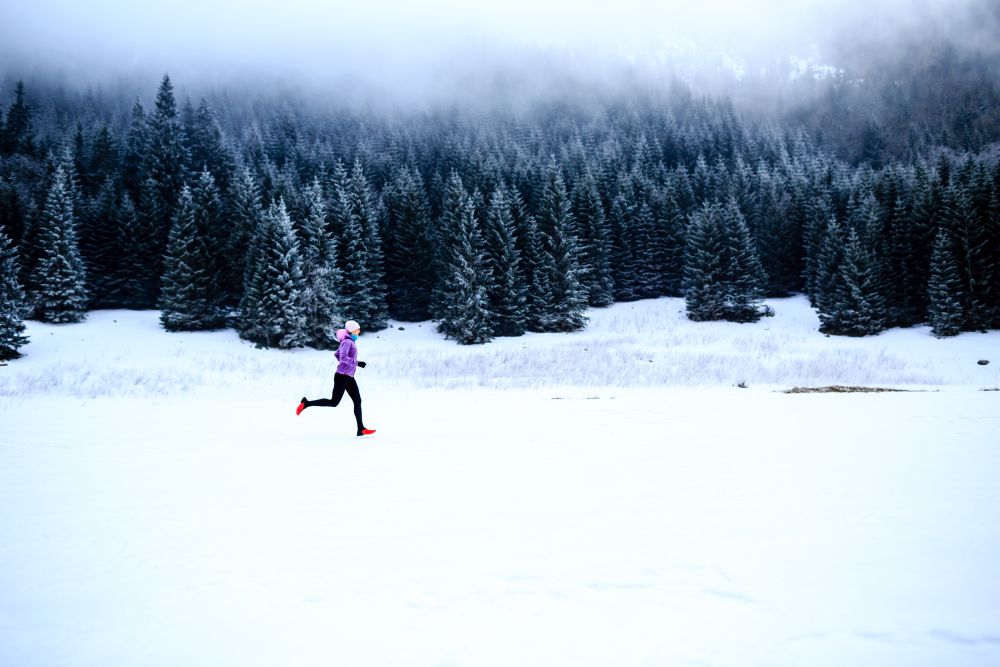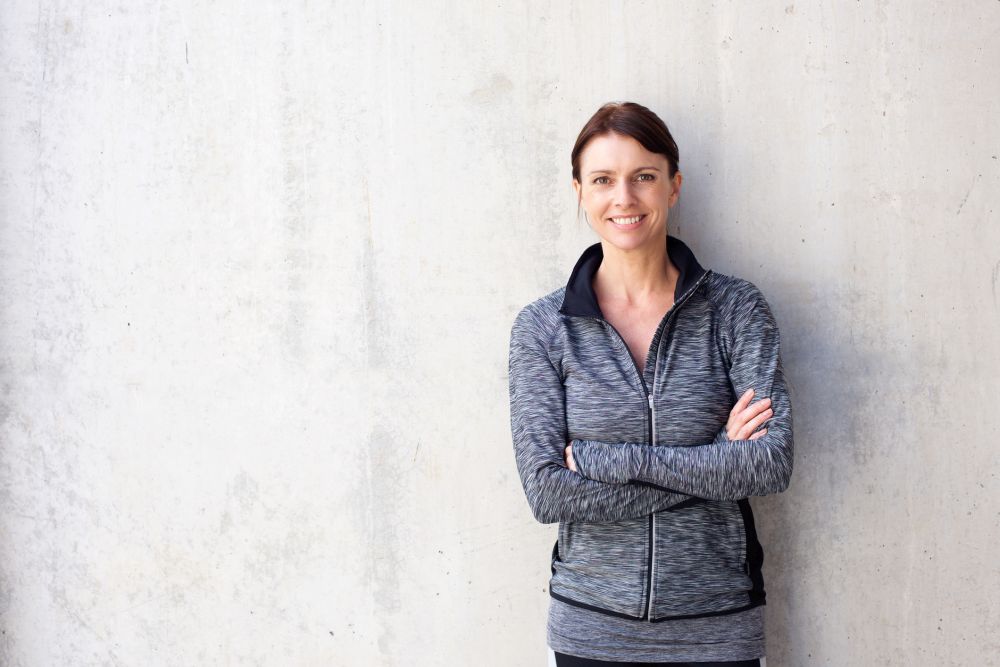Re-think your running identity: How to change your goal-setting game
Is 2018 the year to re-think that running identity of yours?


By Jessica Alred
While runners are notorious for successfully – and often obsessively – setting goals, we are also renowned for letting the singular, repetitive focus of these goals drive us to boredom, burnout and worst of all, injury. Sometimes, the key to successful goal-setting is to change your goals entirely – rethinking who you are as a runner, and ideally, reinvigorating your love of running in the process. “The change in training focus is helpful on so many levels,” says Derrick Spafford, a Yarker, Ont.-based runner and coach who hasn’t taken a day off running since Christmas Day of 1989, and who credits his consistency to varied running interests that take him from track to road to trail and back again, as well as from running shoes to snow shoes depending on the season.
RELATED: Smarter alternatives to classic New Year’s running resolutions
“I found myself wanting a new challenge,” Deborah Russell admits, after running her first marathon in 2005 and qualifying for Boston on her third try in 2008. “The same old road runs day in and day out just weren’t doing it for me.” Russell took her running identity off-road in order to make training fun again, hitting the trails around her Calgary home and the nearby Rocky Mountains with her brother and dog at her side, but in the process, she ended up becoming one of Western Canada’s premier female trail and ultrarunners. While Russell’s example may seem extreme, it points out what kind of passion and potential we may be missing out on by focusing on the same, myopic goals, year in and year out.
Are you a dedicated distance runner who needs to reboot her love of running shorter and faster? A die-hard road racer who needs to take to the trails? A track-loving speed freak who’s ready to run long? Read on to pinpoint your own, specific running identity, and learn how a running rethink might be the key to this season’s greatest successes.

Who you are: the speed freak
Speed freaks look good in a singlet and short shorts, dammit, and they don’t care who knows it. (Plus the speed freak’s predilection for shorter, faster races means they are never outside long enough to need more layering.) Speed freaks can found doing lung-busting warmup drills right up until the gun sounds – heck, they would even do a vocal warm-up if they thought it had a chance of making them faster. The speed freak’s natural training habitat is the track or an uber-fast stretch of pathway designed for tempo runs, where they can ideally chase (and pass) other speed freaks in the life-long battle for speed freak supremacy.
Running rethink: Go long
Jason Brazeau’s fondness for short, fast races once prompted his wife, Heather, to joke that he wished he could do more Turkey Trots and Diaper Dashes, but he couldn’t stand to see kids burst into tears when he lapped them.
But when Heather successfully trained and qualified for the Boston Marathon, Jason was inspired to do a speed freak rethink and train for his first marathon. “I thought – ‘Hey, what if we both qualified for Boston? Wouldn’t that be a gas? And how hard could that be, anyway?’ Note – it turns out it’s really hard to qualify for the Boston Marathon (unless you are my wife).”
Brazeau’s long runs stretched in distance and integrated longer tempo intervals, and he cut back on the short, high-intensity 400m and 800m intervals that were crucial to his speed freak success. Despite following his training plan to the letter, three marathons later, Brazeau’s running rethink didn’t yield the Boston qualifier he’d hoped for, but it did give him a renewed appreciation for his favourite distances, as well as a healthy respect for the marathon. “I think marathoning made me a better 10K runner. It instilled an appreciation for in-race discipline, and I think logging all those miles helped a lot, too,” says Brazeau.
Charles Miron, a Calgary-based running and triathlon coach who trains athletes across a wide range of distances, suggests that any runner looking to make a distance change really needs to assess whether they can make the sacrifices needed – can dedicated speed freaks commit to hours-long, lower intensity workouts designed to build aerobic volume? And can distance driven runners commit to shorter, higher intensity workouts designed to build anaerobic power? Perhaps, says Miron, the ideal compromise is to divide the training season in two.
“Winter months are great for short distances,” says Miron. “The days are short and the treadmill is an easy option. But through spring and fall long distances are much easier to coach and program. It’s a great way to explore both short and long distances. With the right training plan, it’s achievable to see great results in both distances.”

Who you are: the soloist
The soloist can be found padding serenely through the early morning hours, listening to the sweet serenade of NPR podcasts or the sound of their own feet. The soloist often possesses a busy schedule and idiosyncratic run timing that makes training with others a challenge, but also might simply enjoy the ease and simplicity of cardio me-time. The soloist has mastered the art of nodding politely (if a little curtly) at large passing groups of other runners, but sometimes secretly wonders if those groups might be having more fun.
Running rethink: Group work
When Jesse Arnup-Blondin of Ottawa took up running, she was strictly a soloist (and has the podcast playlist to prove it.) However, Arnup-Blondin admits that after five years of solo running, “I fell into a rut of running the same routes at the same paces. I struggled to really push myself in interval and tempo workouts, never able to hit the times my fitness suggested, and my race times plateaued.” The solution came to her in stages – first through early Saturday morning long runs with other new moms, which doubled as precious social time and helped the kilometres fly by, often at a much faster pace than Arnup-Blondin realized because her group was so occupied swapping ridiculous parenting stories and exploring new routes around the city. Arnup-Blondin credits this group support network for her first Boston qualifier, and has since added weekly speed workouts with the Ottawa Athletic Club Racing Team, a women’s running team that includes recently graduated collegiate runners and accomplished masters athletes. “Each week they help me push myself out of my comfort zone as I chase them around laps of the track or through hilly loops of a local park,” says Arnup-Blondin. “In just a year, I’ve seen my training paces drop, and even when I need to do a workout solo, I now have the confidence to go faster than I previously thought possible. Over the past year, I’ve set personal bests at the 5K (20:33), 10K (42:21) and half-marathon (1:35:25) distances, breaking through barriers even I didn’t expect.”

Who you are: the roadie
You might find the roadie obsessively analyzing race course elevation, studying Strava segments and referring to uneven sidewalks or cobblestones as “too technical.” Above all, the roadie believes that running and racing should occur – well, you guessed it – on the road, where presumably one’s fastest times can be run over the preferably standardized distance of one’s choosing – 5k, 10k, 21.1k or 42.2k. The roadie might occasionally run an 8k or 15k road race just to be whimsical, but doesn’t actually believe that these times really matter. The roadie usually has a hallowed, seemingly-unachievable-but-always being strived for time goal for their preferred distance – whether it’s that long sought after Boston qualifier or a sub-(insert nice round number) 5k or 10k. And they can (and often will) sideline themselves with injuries and/or mental fatigue before they get there.
Running rethink: take to the trails
Heading off-road for some trail running adventure may seem like kryptonite to your average roadie, but runners who do a road-to-trail-rethink swear by its healing properties for body, mind, and, in some cases, road race results upon
returning to level ground. “When you’re running on trails, time flies and you’re not looking at your watch wondering
your pace or distance or when the run will be over,” says Russell, who as a former diehard roadie, confessed she typically tapped out mentally around the two-hour mark of a road run. “I also think that’s the best way to stay injury-free.” Despite taking her focus off of pace and distance while she runs trails, Russell ultimately revisited road racing feeling keen and refreshed, setting new PBs across the board, all on the heels of some of her biggest trail-ultra victories. In 2016, Russell was the female winner of the Lost Souls Ultra 100K in Lethbridge, Alta., before going on to represent Canada at the 2016 Women’s 100K road race championships in Spain. Most recently, Russell set a new course record at the 2017 Canadian 50K Trail Championships, and less than a month later was the women’s winner of the Okanagan Half-Marathon, placing only a few seconds behind the male winner. “I try to alternate road and trail runs and it seems to work out great for me,” Russell says. “That way I can keep up my leg turnover and speed on the road which also helps me to run faster on the trails.”
Roadies should proceed slowly and cautiously, however, as they transition to trail running, says Spafford. “If you’ve never run on trails before, then doing a run on a crushed stone surface or an old rail bed is a good start. Then doing some runs where you may do a regular road run, but include several short segments through parks or soccer fields where you’re running on grass.” Spafford also recommends prepping for the inevitable elevation changes of most trails with a few weeks of consistent hill repeats (shorter, more gradual hill repeats on the roads at first) before finally switching to more technical trails with rocks, roots, and longer, steeper elevation changes. Oh, and most importantly, roadies need to be prepared to check their speed egos at the trailhead. “One of the biggest mistakes that road runners make is that they can’t accept the change in speed when running trails compared to roads,” Spafford says. “They think that because they can run X pace per kilometre on the roads that they should be able to run similar paces on trail. Most trails will certainly not allow this to be a possibility. And, they may not want their road running friends on Strava to see that they are running that slowly on trails.”

Who you are: distance driven
You might be distance driven if, when asked about a recent race, you find yourself telling friends that you “only” ran the half-marathon. Distance-driven runners tend to casually refer to their 60k week of running as “taper time,” will typically only register for races that are sufficiently long enough to possess a 100 per cent chance of chafing and/or another form of catastrophic bodily breakdown, and can usually be found in the kitchen finishing off
everyone else’s dinner scraps.
Running rethink: Cut (the distance) and run (as fast as you can)
While distance-driven runners boast impressive weekly mileage, they are also some of the most likely to plateau before achieving their goals, in part because of their reliance on long, easy-paced runs that improve endurance
but not speed. For Rob Tolman of Bolton, Ont., achieving his goal of a strong sub-three-hour marathon would ultimately hinge on speed, not distance. “I knew I couldn’t spend as much time training as I really needed to meet
my responsibilities with my family and job,” he says. “So I had to increase my intensity, strength and speed.” By
prioritizing shorter, faster races (often studying the list and running history of race registrants carefully to find the most competitive fields), Tolman recounts, he was able “to find that red line and hold it as long as possible, then dig a bit deeper to finish regardless of the pain.” Tolman’s hard work in shorter, more intense races paid huge dividends across all distances, yielding him impressive new 5K (17:30) and marathon (2:52) PBs along the way, all achieved in the months after his 40th birthday.
Not all distance-driven runners can manage their “red line” as successfully as Tolman, however, which is why coaches advise a certain degree of moderation during the “cut and run” rethink. “Always always listen to your body – it knows when it’s too much or not enough,” cautions Miron. “Your fancy watch or phone app is just a tool – your body is king when it comes to feedback.” Spafford suggests easing into higher-intensity training before attempting a shorter distance race. “ I’ve run 800m races that were more painful, at the time, than any 100-miler I’ve run.” With this in mind, Spafford recommends starting with shorter distance repeats or strides about three-quarters of the way through a typical run once per week – ideally four to six repeats, 20 seconds each, with two minutes of recovery jogging in between. After a few weeks, Spafford suggests, you can begin to lengthen the distance and time of the repeats (for example, eight to ten repeats, one minute hard followed by one minute easy) and then another few weeks later gradually increasing to two or three minute long repeats. “Aim for a perceived effort of roughly eight on a scale of 1–10 – so brisk, but not sprinting. Focus should be on running as relaxed as possible with a short and quick turnover.”
Jessica Alred is a freelance journalist living and running in Calgary.


